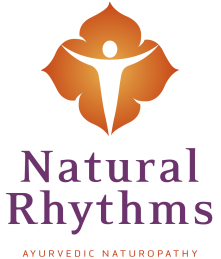Breath, Mindfulness, and the Practice of Qi Gong
Dr. Anuprao Mulakaluri, ND, AWC
This literary work is initiated with deep gratitude for all of the elders, teachers, and ancestors who have carried the wisdom of nature through the many generations, so it may uplift and empower all present and future generations.
Obeisance to Great Spirit, creator of all; source of truth, wisdom, and bliss.
All views expressed here-in are a product of my realization through the practices of breath, mindfulness, and qi gong. These views are supported by authoritative accounts by ancient teachers and scientific accounts of modern researchers.
My deepest gratitude to these visionary beings for all their contributions.
Introduction:
The elders of Hopi people from the four-corners region of the United States recall a story regarding the original peoples of the earth. As the story goes, at the origin of this world, people separated into four clans and migrated to four directions of the earth. Throughout history, these clans have explored the earth to gather wisdom that will benefit all beings. When this knowledge is most needed, the four clans shall come together once again to share the wisdom they have gathered from the four directions. It is this wisdom that will restore the earth to its original glory.1 In the modern world, the United States has become the cradle for such cross-cultural exchange of knowledge. It is this legacy of open-minded people of America that serves as the basis of a wide variety of traditional healing systems that flourish in North America. Besides bringing together peoples from vast diversity of cultures, the United States has also become the stage for gathering multicultural wisdom. The intention of this article is to present a unique combination of cross-cultural wisdom and techniques that can be applied toward physical transformation, emotional freedom, and spiritual evolution.
Discussion herein is about qi gong, breath work, and mindfulness. However, these three are but simple practices designed to guide the human being towards realization of the ultimate truth of the Self and this Universe. The investigation of this truth has been part of the whole of human history. In ancient times, scientists in search of these answers were Rishis (Realized ones) of India, Immortal Sages of China, Shamans of Africa, Northern Europe, Siberia, and both the Americas. In the absence of advanced machinery of the modern world, the ancient scientists turned their gaze inward to penetrate the fabric of the Universe through introspection. These scientists sought to realize the truth through observation of Nature around them and inner communion with their own nature. The legacy of their wisdom still thrives in the form of ancient living cultures of Eastern Indians, Chinese, Native American and South American natives, African, Northern Europeans and other indigenous peoples of the world. The legacy of their wisdom reaches even more people through the continued practice of indigenous medicines like Traditional Chinese Medicine (TCM), Ayurveda from India, Unani from Arabic/Persian tradition, among many more. After thousands of years of history, these traditions still serve many millions around the world. As they do this, they pay homage to the realized beings, who developed them.
On the contrary, modern scientists have access to great technology that provides measurements and objective observations of the fabric of the Universe. Modern physicists are at the forefront of this investigation of the truth underlying all things. Great contributions from neuroscientists, biologists, biochemists, anthropologists, and others have created the bridge to understand how our lives are affected by the Laws of Nature. These modern discoveries validate the practices and beliefs of the indigenous peoples of the world. This has contributed to the resurgence of natural medicine in the West2. The practice of qi gong and meditation have been a part of this resurgence and a return to ancient wisdom. We are finally beginning to realize some truth of our existence as part and product of nature and integrating that with the way medicine is practiced.
Universe and the Science of Qi:
The great Tao (Way) flows everywhere, both to the left and to the right.
The ten thousand things depend upon it; it holds nothing back.
It fulfills its purpose silently and makes no claims.
It nourishes the ten thousand things, and yet is not their lord.
It has no aim; it is very small.
The ten thousand things return to it, yet it is not their lord.
It is very great.
It does not show greatness, and is therefore truly great.
~Lao Tzu “Tao Te Ching” – Chapter 34 – Translated by Feng5
Scientists, ancient and modern, seek to understand the truth of our existence from various vantage points. All scientists observe natural phenomenon to get a deeper understanding of how things function. For a long time, observations of the ancient scientists have been disregarded as poetic, metaphorical musings in favor of superiority of modern scientific realizations. However, emerging evidence points at a picture of the Universe that affirms the credibility of ancient viewpoints.
Consider, for example, the origin of the Universe that is termed by scientists as the “Big Bang”. According to the Big Bang theory, the infinitely large Universe filled with trillions of stars, billions of galaxies, and gazillions of planets, originated from a finite, single speck of “nothingness”.4 This singular origin of all things binds everything in the Universe as one, without a second. This theory reveals a paradox that proved confusing for many scientists through the first half of the twentieth century. How could the myriads of material manifestations like the suns, moons, and planets arise from nothingness? But such paradoxes are common in Eastern philosophical thought; an example is the above chapter from the Tao Te Ching, by sage Lao Tzu. In the Chinese language, the word Tao means ‘the Way’, the word Te means ‘Virtue’. The above verse describes the Tao as the origin of all things (the “ten thousand things”); these depend on the Tao, they are nourished by the Tao, and ultimately return to the Tao. The same Tao is described as being very small and yet, it flows in all directions, encompassing all things.
The paradox of Lao Tzu’s statement is also encountered in the observations of modern scientists. In the early twentieth century, Albert Einstein described the Theory of Relativity which postulated that all matter is composed of energy; the amount of energy in each object is measured relative to the speed of light (E = mc2).(appendix)6 In other words, all of the material things we observe in our day-to-day life are energy that is condensed into a solid form. This theory has proven its validity through the years. It has been used to describe the nature and movement of many celestial objects and light through space and time.6 The Theory of Relativity gave validity to the fact that all matter has energy as its basic ingredient. Around the same time as Einstein, scientist Ernest Rutherford was studying the atom, which was the smallest object that was known to humans at turn of the nineteenth century. Rutherford discovered the atom was mostly made up of space, with its most solid part, the nucleus, filling only a minute amount of space. To illustrate this, empty space of the atom was imagined as a large cathedral with a pea-sized nucleus at the center of it.6 To further amazement of scientists it was found that the nucleus, which is the densest part of the atom, was also mostly made of space as well. Rutherford’s model of the atom was refined by scientist Neils Bohr, and became the basis of developing the atomic bomb as well as nuclear power. This discovery begged the question, what were these sub-atomic particles (electrons, neutrons, protons) made up of and why did they appear more solid than they actually were?
In 1900, German scientist Max Planck offered an answer to this question. Planck discovered that light behaved as waves and particles. This important discovery implied that all solid objects, including sub-atomic particles were, in fact, small packages of electro-magnetic waves, called quanta. These small packets of electro-magnetic energy could be observed to act as waves or particles depending on how they were measured. Herein, scientists discovered another paradox: How could the same object be an energetic wave and a physical particle? That is fundamentally contradictory according to classical physics. Therefore, this paradox gave birth to the science of Quantum physics.
“Every particle in the Universe is bathed in a sea of Ether, including the orbiting electrons of atoms and plasma.” ~ Nikolai Tesla – scientist and inventor9
Over time, scientists have discovered that only about 4% of our Universe is visible and measureable by our senses and instruments; while the other 96% exists as “dark” energy and “dark” matter.7 This “dark” material is not out there somewhere, as one might expect. Rather, it permeates all things; it is in the spaces that make up the atoms. The “dark” energy and “dark” matter is in every atom of our body and in every speck of space that surrounds us. While the visible universe represents the kinetic energy of the Universe, dark matter/energy represents all the potential energy of the Universe. That is to say, the spaces that we observe within and all round us are really filled with an invisible world, full of potential. In the above quote, scientist and inventor, Nikolai Tesla describes this as the “sea of Ether” that bathes every particle in the Universe. As part of his discoveries, Tesla also maintained that electromagnetic forces observed in the sub-atomic particles are derived from and influenced by the Ether, constantly.8
With regards to qi gong, the emerging understanding of the energetic nature of the Universe, visible and invisible, indicates that modern science has finally led us to some limited understanding of the nature of qi. The electromagnetic feature of all subatomic particles is kinetic energy of our Universe that makes up the world that we readily see, hear, feel, and observe around us. While a greater portion of the Universe is a mystery that is immeasurable; it is closer to the source of all things in nature, compared to the visible world. Qi, the electromagnetic force or kinetic energy, is the basis of all measureable activity in the Universe; it arises from the threshold between the visible and the invisible. At the subatomic level, qi that we observe with scientific instruments is inseparable from the qi of all things, and inseparable even from the invisible world beyond our senses.
Recognizing this aspect of qi, the stage is set for discussing the true power of qi gong practice.
References:
Thomas ME. The Hopi Survival Kit. Reprint edition, Penguin Compass press, New York, New York. 1997.
National Institutes of Health. “The Use of Complementary and Alternative Medicine in the United States.” National Center for Complementary and alternative medicine, Dec. 2008.
Guan Cheng-Sun and Jill Gonet. Qi Gong: Internal Activition, Yi Ren Medical Qigong Manual Vol. 1. Copyright, 2010 by Guan-Cheng Sun and Jill Gonet.
Stephen Hawkings and Leonard Mlodinov. The Grand Design. Bantam books, Random house Inc. New York, New York, 2010.
Feng Gia fu and English J (translator). Lao Tsu: Tao Te Ching, Chapter 34. New York, Vintage Books, 1989.
Strathern P. The Big Idea: Bohr & Quantum Theory. Arrow publishing, Random House Inc. London, UK, 1996.
Stephen Hawkings, Brief History of Time. Bantam Books, New York, New York, 1998.
Tesla N. “My Inventions.” The Philovox, CreateSpace Independent Publishing Platform, 2013. Originally published in 1919.
R. Webster Kehr. The Detection of Ether. First Edition 1.0: Copyright (2002)R. Webster Kehr, Overland Park, Kansas, USA; October 4, 2002




